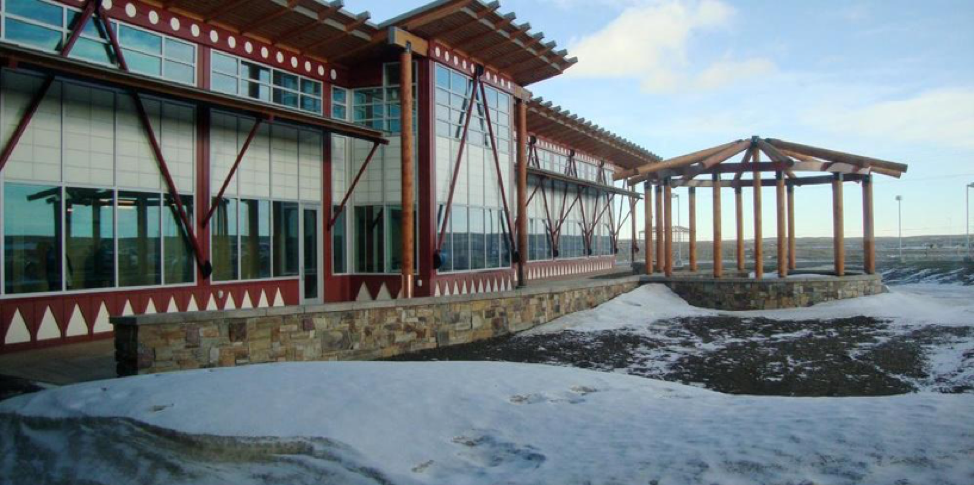USING CULTURALLY RESPONSIVE AND EQUITABLE EVALUATION APPROACHES IN PARTNERSHIP WORK

Research-practice partnerships that draw on culturally responsive and equitable evaluation (CREE) approaches may be one way to support studies that benefit the community, particularly groups that have been systematically excluded or marginalized. CREE approaches to research that promotes equity by centering the questions on a specific community, its people, their stories, and who gets to tell those stories.
Our research and evaluation team at Education Northwest has found CREE approaches invaluable in our work. Education Northwest is a nonprofit research and professional services organization whose mission is to use evidence to help partners solve educational challenges and improve learning. We partner with K–12 schools and districts, government agencies, postsecondary systems and institutions, philanthropic organizations, and nonprofit and community-based organizations to conduct research and evaluation, provide professional development, and design learning experiences that support an excellent and equitable education for all.
Since equity is one of our organization’s guiding values, CREE approaches are a natural fit for not only achieving equitable outcomes but also conducting the entire research and evaluation process in a way that aligns with our values. CREE requires that we begin by understanding systemic barriers and the context in which we work, intentionally reflect on how our positionality impacts situations and interactions, and meaningfully engage the community in every step of the process. As we address unequal power dynamics and create opportunities for students and other research participants to claim agency in our projects, we find it improves the questions we ask, the data we collect, and the impact of our findings.
Our team has spent the last several years deepening our knowledge of CREE by participating in organization-wide training and applying what we learn across our projects. As we continue to learn and grow in this area, we have appreciated the opportunity to connect with other researchers in the field to share our successes, challenges, and tools for doing this work well. For example, at the recent NNERPP Annual Forum, we facilitated a learning session on a resource we developed for meaningfully engaging with CREE practices.
In this article, we build on that learning session by spotlighting the CREE framework, beginning with an overview of its key principles. We then turn to a real-world example of how we used the CREE approach with a higher education partner. Finally, we end with reflection questions to help researchers engage with CREE practices in their own contexts.
CULTURALLY RESPONSIVE AND EQUITABLE EVALUATION FRAMEWORK
While much of the early literature around CREE was largely theoretical, Hood, Hopson, and Kirkhart (2015) considered CREE’s practical application and contributed significantly to the development of the approach’s principles and practices. Below, we outline key steps from Hood, Hopson, and Kirkhart’s nine-stage culturally responsive evaluation framework (2015) with examples of what implementing these steps has looked like in our projects at Education Northwest. Note that these are just brief illustrations—these steps can be implemented many different ways depending on the specific evaluation, community, and so on.
- Prepare for the evaluation. Gather a team and begin to engage partners whose experience and expertise are appropriate and responsive to the context and needs of the evaluation to develop and provide feedback on the study plan. Consider who in the community has traditionally had less agency or voice in decision making and be sure to include their voices. In practice this may look like convening an advisory group or holding feedback sessions and ongoing meetings with diverse partner groups, respected local advisors or champions, and community members to better understand their goals for the research.
- Identify the purpose of the evaluation and frame questions. Collaborate to align the purpose of the evaluation with the community’s cultural values. As you engage with partners, stay attuned to power imbalances that may impact group dynamics. For example, consider who is participating—and not participating—in meetings (e.g., program participants, leaders, or community members). You may be able to increase participation by offering multiple options for engagement and using small groups, including affinity groups, where people feel safe to share their insights and experiences. Develop equity-centered evaluation questions focused on changing systems rather than those most impacted by the system.
- Design the evaluation. To determine what qualifies as credible evidence, prioritize community values instead of imposing a research framework. In CREE approaches, knowledge is understood within the historical, social, and cultural context of the community. One way to learn about a program’s context and incorporate local community knowledge into the evaluation design is to deeply engage partners in feedback around the evaluation plan and guiding questions.
- Select and adapt instrumentation and collect data. Consider the time and resources participants will have to spend to provide data. Interactive methods, like photo voice or walking interviews, can allow for power-sharing and co-ownership of the data.
- Analyze data. Disaggregate data to explore how some groups are impacted more than others and examine outliers that can be used to elucidate complexities. Engage partners in the process of sense-making and in decisions about refining the analysis so that the final results are meaningful to the individuals who are most impacted by the evaluation.
- Disseminate and use results. Deliverables should go beyond adding to the knowledge base; they should give back to the participants and community and be accessible and usable for relevant partners. To make resources accessible, consider reporting findings in culturally responsive and asset-based language, translating content into languages spoken by community members, and using figures and quotes. In addition to traditional written reports, consider creating infographics, blog posts, case studies, toolkits, or data dashboards.
A CASE EXAMPLE: THE BLACKFEET COMMUNITY COLLEGE COMMUNITY NEEDS ASSESSMENT
Blackfeet Community College (BFCC) is a Tribally chartered community college in Browning, Montana. BFCC partnered with Education Northwest to facilitate a culturally responsive community needs assessment, which involved gathering information from the community about the work the college is doing, identifying opportunities for growth, and engaging in a strategic planning process.

Our approach incorporated the college’s Nii-tsi-ta-pi world of knowledge and core values, including the Blackfeet ways of knowing; respect for one’s self, all other people, and each thing in the natural world; living in a good way; trying hard; accepting everyone; and happy living. We also emphasized meaningful engagement with a range of partners to ensure that our questions, activities, and deliverables integrated multiple perspectives.
We started by facilitating a discussion to understand the topics that were important to BFCC and to identify data sources. From there, we met regularly with BFCC partners to refine the evaluation questions and develop an approach that reflected the community’s values. With their input, we decided to focus the needs assessment on how the college can align academic programs with workforce development opportunities in the community. Together, we developed the following data collection and sense-making methods as well as strategies to involve the community in leveraging the data we collected for planning:
- Interviews with administrators, faculty members, community partners, and the Blackfeet Tribe, as well as student talking circles and surveys
- A community-based asset map highlighting the structures and strengths of the college; existing community partnerships and relationships; and the broader historical, political, and cultural assets of the Blackfeet community
- A public forum with administrators, faculty members, staff members, community members, and the Blackfeet Tribe to gather input and reflection on key study findings
- Two all-day strategic planning sessions to use recommendations from the needs assessment to identify high-level priorities across the BFCC community
As a result of our work together, BFCC developed an equity-centered strategic plan and action plan for implementation.
CLOSING THOUGHTS
By prioritizing the values and experiences of the community, the CREE approach supports partners to use evaluation as a tool to promote equity and systems change. As you think about using the CREE approach in your own partnership contexts, here are some key questions to consider:
- What communities are most impacted by the issues I am researching? How can I include their voices throughout the research process?
- How can I ensure the research addresses system-level root causes and does not focus on community or student deficits?
- What power imbalances should I be aware of? Whose voices are typically prioritized? Whose voices are missing? How does my positionality impact any existing power imbalances?
- Thinking forward, how can research findings positively impact the communities most affected by the program or policies I am studying?
We believe research-practice partnerships are particularly well suited to CREE approaches, as they often seek to disrupt traditional boundaries between researchers and practitioners or community members. We invite you to explore these approaches and we would love the opportunity to hear from you about the ways you are incorporating CREE practices in your own work!
Emi Fujita-Conrads is a senior researcher in culturally responsive and equitable evaluation at Education Northwest, and Michelle Hodara is a director of applied research and equitable evaluation at Education Northwest.
Suggested citation: Fujita-Conrads, E. & Hodara, M. (2024). Using Culturally Responsive and Equitable Evaluation Approaches in Partnership Work. NNERPP Extra, 6(4), 17-21. https://doi.org/10.25613/D1F0-MS40
